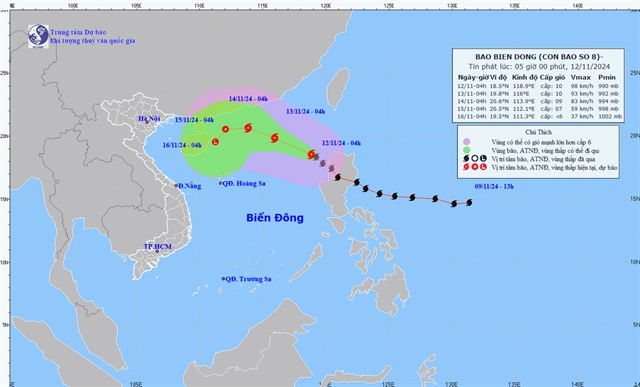 Society
Society

 |
| The Planning, Fair and Exhibition Palace is devastated by Typhoon Yagi on September in the north-eastern province of Quảng Ninh.—VNA/VNS Photo Đức Hiếu |
HÀ NỘI — The Hà Nội University of Science and Technology's Institute for Research and Application of Artificial Intelligence, alongside relevant units, have been told to work closely with the National Centre for Hydro-Meteorological Forecasting to integrate artificial intelligence (AI) into the forecasting of tropical cyclones ahead of the 2025 rainy and storm season.
Associate Professor Mai Văn Khiêm, director of the centre, made the requirement at a symposium on the application of AI in early warning systems for tropical cyclones in the East Sea.
Khiêm, speaking at the forum on Wednesday in Hà Nội, said that the centre had already applied AI in forecasting thunderstorms within a six-hour period with initial success.
AI was also being tested in hydrological forecasting.
Head of the centre’s Numerical Weather Prediction and Remote Sensing Office Dư Đức Tiến said that their research team was currently exploring methods for forecasting the intensity of tropical cyclones, using ensemble learning techniques with best-track data and re-analysis.
The research was focusing on building a comprehensive database on tropical cyclones and oceanic meteorological fields in the East Sea over the last decade and their impact on Việt Nam.
Additionally, the research aimed to develop an AI system for forecasting tropical cyclones with a focus on extending those forecasts up to three days in advance.
The study also covered the transfer of technology for forecasting tropical cyclones using AI systems.
At the seminar, engineer Nguyễn Đức Long, a representative from the research group at the institute, talked about the use of deep learning (DL) models to enhance the accuracy of cyclone intensity forecasts.
The deep learning model, which used the Transformer architecture and model calibration techniques, was aimed at predicting cyclone intensity up to 24 hours in advance.
Preliminary results indicated that the model significantly outperformed existing forecasting methods.
The team would continue to collaborate with the centre to expand their research topics, tackling challenges in storm forecasting and rainfall prediction.
They would also apply their research findings to operational forecasting, providing an additional reference source for meteorologists.
The results of this research were expected to be used in the next rainy season.
Commenting on the potential of AI models for regional cyclone intensity forecasting, Kiều Quốc Chánh from Indiana University, USA, expressed optimism about the AI model's potential for forecasting storms in Việt Nam.
However, he noted that the model had not yet reached the level of comparison with the global and regional models currently used at the National Centre for Hydro-Meteorological Forecasting.— VNS




